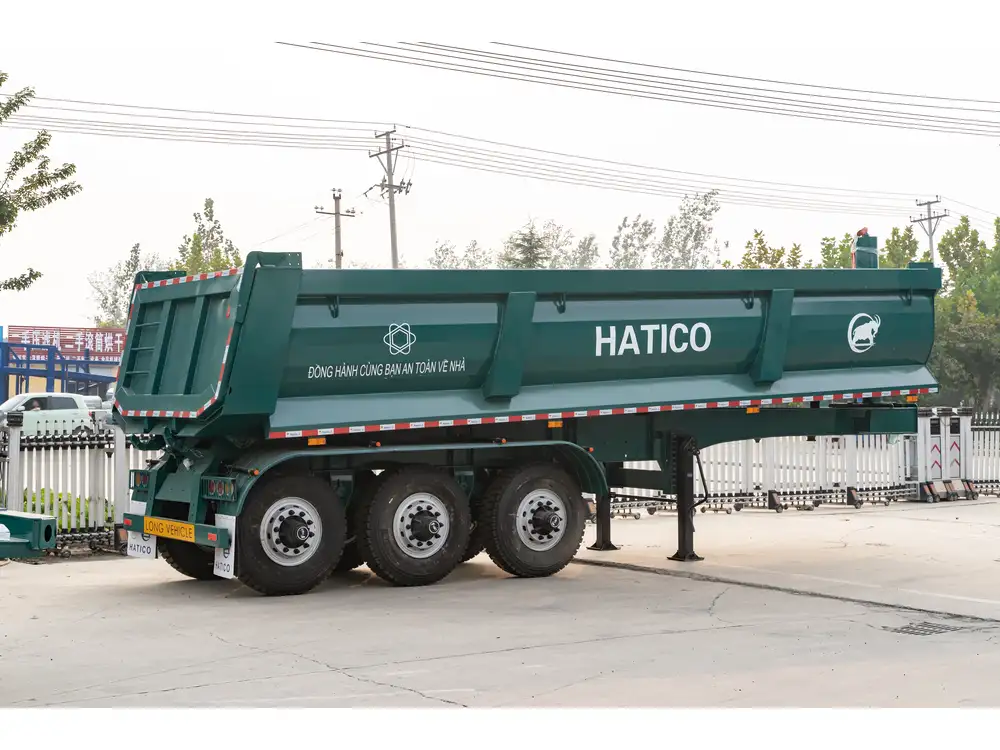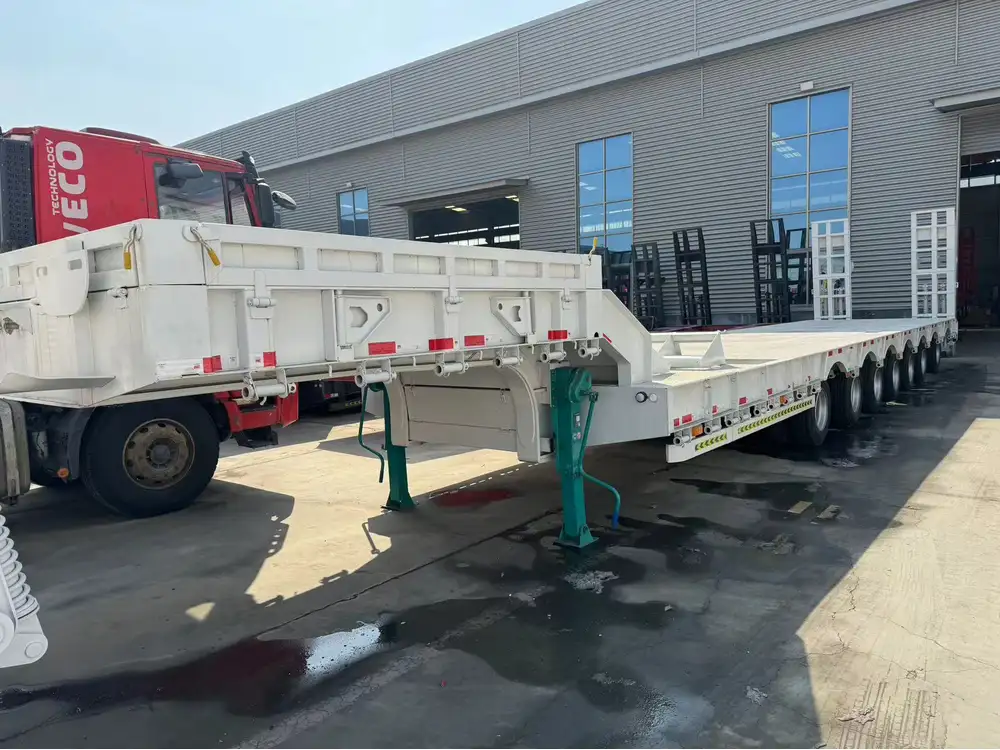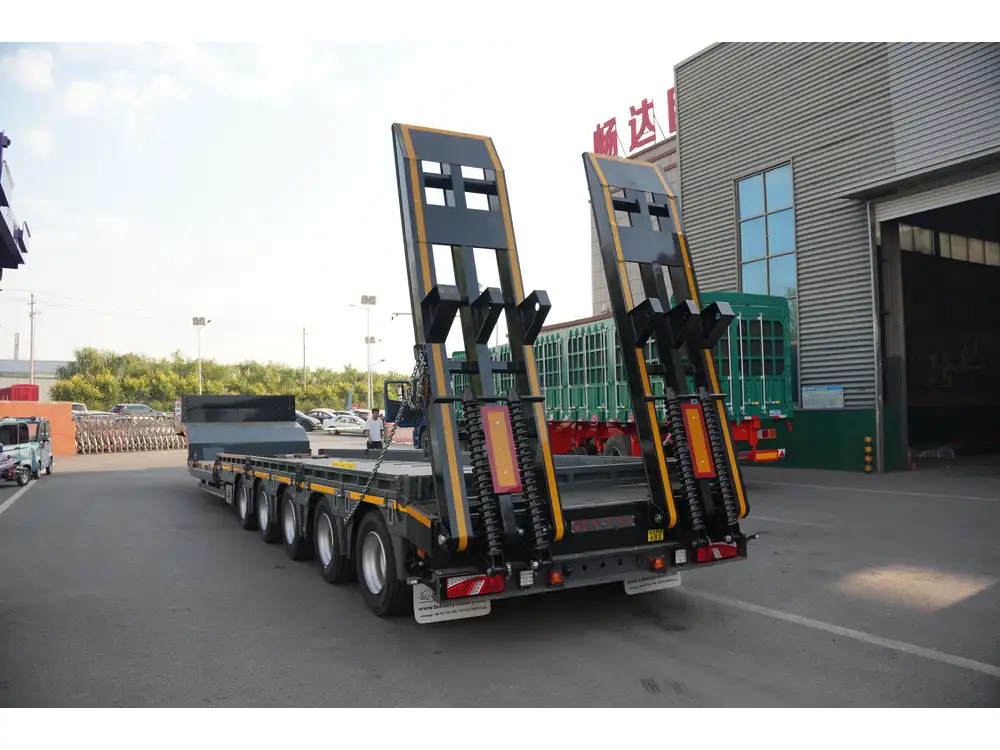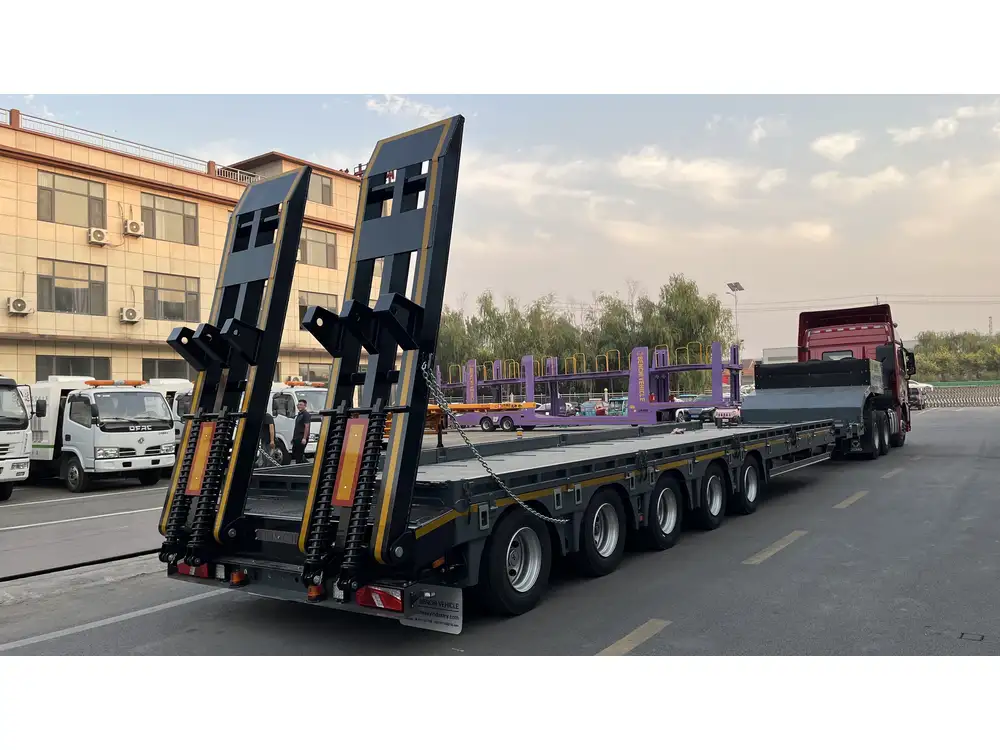When it comes to transporting bulk liquids, tank trailers play a pivotal role in the logistics and transportation industry. They serve numerous sectors, from agriculture to petroleum, necessitating a thorough understanding of their specifications, including their capacity. One common query that arises is, “How much does a tank trailer hold?” Exploring this topic not only clarifies capacity but also considers various factors that influence it.
What is a Tank Trailer?
Tank trailers are specialized vehicles designed for transporting liquids. They come in various shapes and sizes, typically constructed from sturdy materials like aluminum or stainless steel, which facilitate the safe and efficient transportation of a wide array of liquids—be it water, chemicals, or fuel.
Break Down of Tank Trailer Specifications
| Type of Liquid | Average Capacity (Gallons) | Common Applications |
|---|---|---|
| Water | 1,500 – 10,000 | Agricultural irrigation |
| Fuel (Diesel) | 5,000 – 11,000 | Fuel distribution |
| Chemicals (non-hazardous) | 6,000 – 10,000 | Chemical transport |
| Milk | 5,000 – 7,000 | Dairy logistics |
| Cement Slurry | 2,000 – 4,000 | Construction projects |

Determinants of Tank Trailer Capacity
The stated capacities of tank trailers vary widely due to several destructive and constructive factors. Understanding these components provides insight into how much liquid a specific tank trailer can hold.
1. Configuration of the Tank
Tank trailers can vary in design, including:
- Single-compartment tanks: These allow for one type of liquid only, generally maximizing capacity.
- Multi-compartment tanks: These are ideal for transporting different liquids simultaneously, albeit with reduced capacity per compartment.
2. Type of Liquid Being Transported
Different liquids have different densities. Here are a few examples to illustrate:
- Water: Roughly 8.34 pounds per gallon.
- Fuel (such as gasoline): Approximately 6 to 7 pounds per gallon.
- Milk: Close to 8.6 pounds per gallon.
Because of density variations, the total weight a trailer can carry alongside its holding volume is crucial.

3. Regulatory and Safety Standards
Government regulations dictate maximum payload limits for tank trailers. Overloading a tank trailer can lead to significant legal issues, including fines and liability for accidents. Compliance with weight regulations ensures that the combined weight of the trailer and its cargo does not exceed state or federal limits.
How to Calculate Tank Trailer Capacities
For precise calculations regarding capacities and weight limits, we consider the following formula:
[ \text{Total Weight Allowable} = \text{Trailer Weight} + \text{Cargo Weight} ]Using a typical scenario: suppose the trailer weighs 4,000 pounds and has a maximum allowable weight of 20,000 pounds. We calculate the maximum cargo weight as follows:
[ \text{Max Cargo Weight} = 20,000\text{ lb} – 4,000\text{ lb} = 16,000\text{ lb} ]To determine how many gallons this represents, we can apply the specific liquid weight:
- For Diesel (7 lb/gal):
- For Water (8.34 lb/gal):
These simple calculations demonstrate the importance of knowing both the trailer specifications and the specific liquid being transported.
Exploring Tank Trailer Variations
Tank trailers come in an array of configurations to cater to the diverse needs of different industries. Here’s a deeper look into different types featuring their potential capacities and best use cases.

1. Fuel Tank Trailers
Typically used for transporting various types of fuel, these trailers are crucial in fuel distribution operations. A fuel tank trailer commonly holds:
- Capacity Range: 5,000 to 11,000 gallons.
- Common Uses: Gas stations, fuel depots, and agricultural fuel supply.
2. Chemical Tank Trailers
Designed with safety in mind, chemical tank trailers transport liquid chemicals or hazardous materials. They require specialized tank designs that often limit the total volume.
- Capacity Range: 6,000 to 10,000 gallons (varies based on regulations).
- Common Uses: Industrial chemical supply and hazardous waste transport.
3. Food Grade Tank Trailers
Necessary for transporting consumable liquids like milk and juice, these trailers comply with stringent health and safety standards.
- Capacity Range: 5,000 to 7,000 gallons.
- Common Uses: Dairy farms and beverage distributors.

4. Cement Tank Trailers
Such trailers are utilized in construction sites for transporting slurry cement mixtures, although they operate differently than traditional liquid transport trailers.
- Capacity Range: 2,000 to 4,000 gallons (adapted based on consistency and payload).
- Common Uses: Construction projects.
Comparative Analysis of Tank Trailer Capacities
Understanding the capacities across different types of tank trailers provides essential data for logistics planners and fleet managers. Below is a summarized comparison:
| Trailer Type | Capacity (Gallons) | Typical Use Cases |
|---|---|---|
| Fuel Tank Trailer | 5,000 – 11,000 | Fuel distribution |
| Chemical Tank Trailer | 6,000 – 10,000 | Industrial chemical transport |
| Food Grade Tank | 5,000 – 7,000 | Dairy products |
| Cement Tank Trailers | 2,000 – 4,000 | Construction industry |
Best Practices for Choosing a Tank Trailer
Choosing the right tank trailer is paramount for operational efficiency. Beyond simply assessing capacity, consider these best practices:

1. Evaluate Payload Requirements
Knowing the specific weight and volume requirements of what you intend to transport will narrow down trailer options significantly.
2. Understand Regulatory Compliance
Ensure that the chosen tank trailer meets all local and federal regulations for weight limits and safety standards specific to the liquid being transported.
3. Consider the Construction Material
The material of the tank trailer impacts its durability, weight, and suitability for different liquids. For example, stainless steel is often preferred for food-grade liquids due to its resistance to corrosion.

4. Assess Load Distribution
Even with adequate capacity, proper load distribution is critical to avoid trailer instability. Multi-compartment trailers necessitate careful loading strategies to propagate uniform weight distribution.
Conclusion
Understanding how much a tank trailer can hold not only aids in operational decisions but also ensures compliance with transportation regulations. From selecting the appropriate liquid transport method to adhering to guidelines that inhibit overloading, both capacity and regulatory knowledge are paramount in the modern logistics landscape.
By thoroughly assessing the diverse options available, stakeholders can optimize their operations to meet demands while mitigating potential risks associated with liquid transport. Knowledge of these intricacies positions businesses for enhanced efficiency and productivity in transporting a variety of goods, making informed decisions about equipment that aligns with their unique operational needs.



